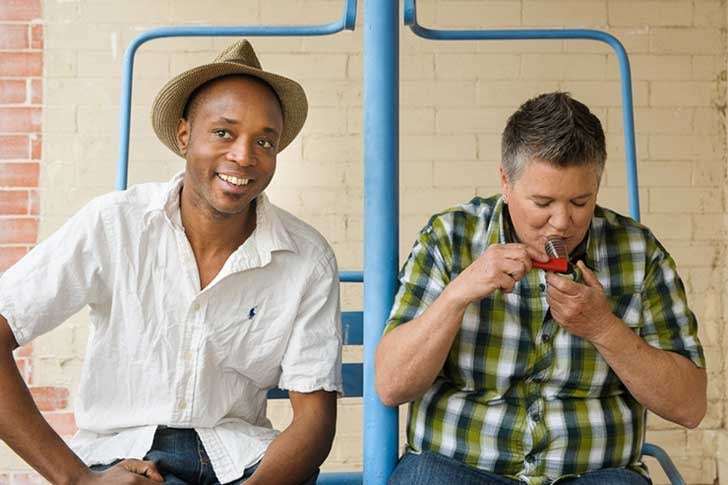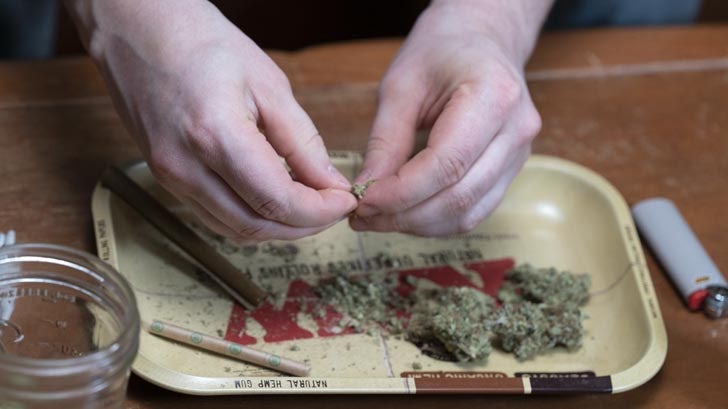The cannabis experience is significantly influenced by mindset (intention/expectation) and setting (environments of consumption and post drug onset). One’s male or female biological sex can also affect the mind and body reaction to cannabis, alongside and in concert with a number of other factors, including an individual’s endocannabinoid system and the cannabis chemovar(s) being used.
Biological sex-associated differences can range from how strongly the effects are felt, side effects like anxiety, changes in heart rate, effectiveness at relieving pain, and sexual arousal. Researchers have even found that the risks of cannabis abuse and driving under the influence differ for men and women.

How does that work?
The differences in how the body reacts to drugs, how drugs act on the body, and dose, all play a role in the ways that some medications can have a different — and potentially more dangerous — reaction for women than men.
A Swedish study from 2008 said that “many but not all, such gender related differences can be explained by the effects of sex hormones,” and added that while sex differences in drug response can be seen on the receptor level, there is a paucity of research on the matter.
The overall lack of an explanation into the “why” of gender differences in drug reactions and efficacy is a recurring theme in the research, but a number of studies have already asserted that there are at least some clear differences in how men and women use cannabis.
Why cannabis affects men and women differently
Scientists are not all in agreement about how and why sex differences lead to different effects of cannabinoids and cannabis. The theories include hormonal differences, muscle mass and fat ratios, volume of cannabinoid drug distribution, and cannabinoid metabolism in the liver.
One review of existing research found that sex differences in cannabinoid effects might be from different pharmacodynamics (how drugs affect an organism), and pharmacokinetics (how the organism affects drugs), both of which influence dosing, benefits, and adverse effects. Sex differences with cannabis are also due at least in part to the ways males and females experience emotions as well as “differences in muscle mass at fat tissue distribution between males and females.”
The researchers were careful to add though, that “investigation of such differences is still at an early stage.”
They did stipulate that some of the differences they found in their review included that, among non-marijuana smokers, “men are more sensitive to the subjective effects of delta-9-THC alone than women,” and that women “report significantly more dizziness than men.” They clarified though that they did not find any gender differences in regard to how THC affects impulsivity (disinhibition).
The review also found that preclinical studies show that men may be more receptive to the hunger-inducing effects of cannabis (the munchies).
However, females are still underrepresented in clinical research and if these studies “routinely included subjects of both sexes, greater progress in the field would be reached in a shorter time. Clinical studies should also report all findings, whether positive or negative, in order to quantitatively define the issues related to the gender differences in cannabis consumption,” the researchers added.
Yet another theory holds that sex can actually impact how sensitive one is to cannabinoids.
The authors of the study that produced that theory wrote that there is growing evidence to show the endocannabinoid system is sexually dimorphic (it has two different forms) and that hormone differences could seemingly be the basis for the different ways men and women react to cannabinoids like those in cannabis.
The ways weed affects men and women differently
Stronger effects for women
While feeling stronger effects of cannabis might be a good thing in some situations, it can also have its down-side.
A study published in 2020 found that females exhibited greater peak blood concentrations of an important cannabis metabolite and greater subjective ratings of “drug effect,” even when controlling for body weight. These drug effects included ratings of “anxious/nervous,” “heart racing,” and “restless,” which were significantly higher among the female respondents.
The researchers concluded that starting doses for females should be lower, and that public health officials should issue warnings about the higher risk of acute anxiety related reactions among female cannabis users.
More effective at reducing pain for men
There is evidence that cannabis has a stronger pain-reducing effect on male users than it does for women.
Researchers, who published a 2016 study on the matter, had 42 people put their hands in ice water — some given cannabis with THC and others cannabis without THC — and found that the men in the group were able to keep their hands in the cold water longer than the women.
It should be noted, however, that the cannabis used in the experiment had relatively low levels of THC (3.56-5.60%), and cannabis with levels closer to what is available in the medical and recreational markets could have led to different results.
More sexually arousing for women
Numerous studies over the years have found that women who use cannabis have more sexual satisfaction — and the more they use the greater the satisfaction.
A survey-based study published in 2020 found that “Increased frequency of marijuana use is associated with improved sexual function among female users, whereas chemovar type, method of consumption, and reason for use does not impact outcomes.”
For men, it’s a little bit of a different story. One study suggested “some experienced (male) smokers have derived an enhancement of sexual pleasure while they were using marijuana.”
The question of erectile dysfunction, however, still hangs undecided. Some subjects in studies have reported superior erectile function, while others the opposite.
Those studies, however, aren’t the final word — in 2010, researchers found that the influence of cannabis on sexual behavior appeared “to be dose-dependent in both men and women.”
This article’s medical editor points out, the presence of pesticides or other contaminants could also adversely impact sexual function, memory impairment, and in other ways reduce the quality of the cannabis experience.
How men and women use cannabis differently

Gender differences in risk perception, stigma, intake method, the role of peer pressure, and propensity to develop a dependency (Cannabis Use Disorder) have all been asserted in published research in recent years.
Females “[are] nearly two times more likely to perceive risk in regular marijuana use compared with males,” a study from 2015 found, though it added that the perceived risk among women dropped from 59% in 2002 to 47% in 2012.
A comprehensive review of existing research published in March 2020 found that when women use cannabis, they “transition more quickly to cannabis use dependence compared to males.”
This doesn’t mean that women are more prone to develop Cannabis Use Disorder, rather those that do, develop it on average 4.7 years after they first use marijuana, as opposed to 5.8 years for men. The study found there was no difference between men and women in terms of how old they were when they first started using cannabis.
Gender-based stigmas and quality of life effects
Among other differences, the review found that “the negative effect of cannabis use on mental quality of life scores was more pronounced for women.” Part of this may be social in nature, in that women may face greater stigma and discrimination for using substances like cannabis, according to the researchers. Another reason could be greater sensitivity to contaminants.
In other words, those women who do develop Cannabis Use Disorder not only do so quicker than men on average, but they feel it more intensely, in part because of the greater stigma attached towards women who consume cannabis.
The stigma might be partly because men are more likely to use marijuana, and thus it’s more expected of them, if not more accepted. A 2019 National Cannabis Survey in Canada found that 18.4% of male respondents had smoked cannabis in the three months prior, as opposed to only 15.1% of women.
Doctors less likely to support medical cannabis for women
Furthermore, there may also be differences in how medical professionals consider cannabis use by female patients. A survey of 361 medical cannabis users in Illinois, for instance, found that women reported “lower levels of support from physicians for [medical cannabis] use.”
The study also found that women were more likely to decrease their use of other prescription medications after receiving a medical marijuana license — particularly from a physician supportive of their cannabis use.
Women eat more edibles, men smoke more flower
But what about when men and women actually get high? Is there a gender difference in the consumption methods used? That same National Cannabis Survey found that men are more likely to smoke marijuana flower and women are more likely than men to use edibles, while a separate Canadian study from 2019 found that men were more likely to prefer vaping cannabis (15.8% vs 10.8% of women), and surmised that this could be because taking edibles is more discrete and allows women to easier avoid scrutiny for using cannabis.
Women don’t drive while high as often as men
Perhaps the most glaring difference could be in terms of driving while under the influence of cannabis. A 2018 report compiled in the US found that while 43.9% of male reported driving after using cannabis, only 8.7% of female respondents had.
In summary, common sense, anecdotal evidence, and scientific studies tell us that each person’s experiences with cannabis may be influenced by dose, route of administration, frequency of use, assessment of risk, their biological sex, hormonal environment, expectations (set), and context of use (setting).
Sign up for bi-weekly updates, packed full of cannabis education, recipes, and tips. Your inbox will love it.

 Shop
Shop Support
Support


















